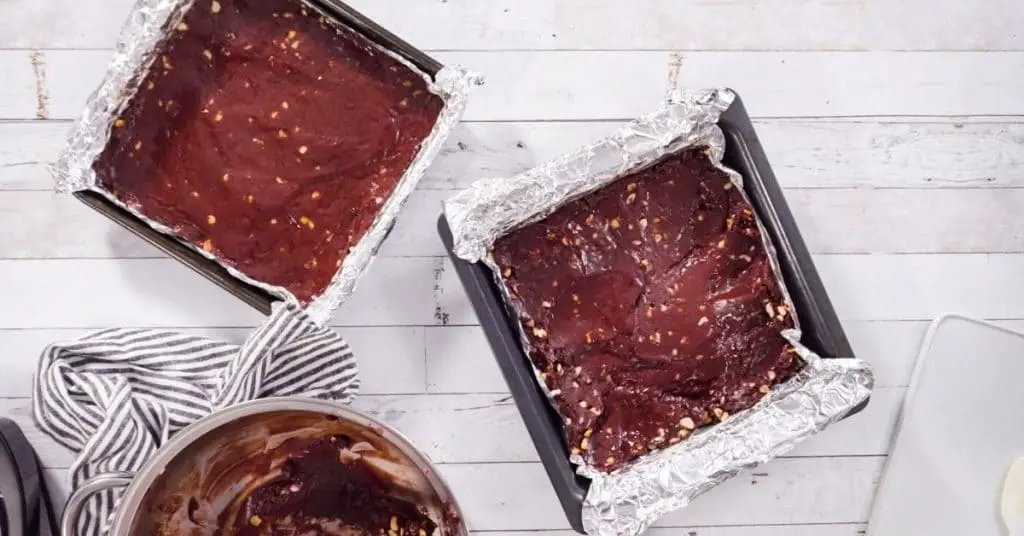In summary: Yes, you can freeze fudge to extend its shelf life and enjoy it later. However, it’s important to consider the type of fudge and its ingredients and proper packaging to prevent freezer burn and maintain its quality.
Fudge offers big indulgence in just a small bite. Sweet, creamy, rich, and smooth, it is the perfect treat for someone with a sweet tooth. Although fudge does have a reasonably long shelf life, it can be a bit too much sweetness to consume before it starts deteriorating.
Luckily, you can preserve fudge in the freezer, whether homemade or purchased from a candy store. Prolong its shelf life for a few more months and maintain its freshness for anytime sweet indulgences.
Can Fudge Be Frozen?
Yes. The great news is that you can freeze fudge. Make a big batch in advance and you’ll be set with sweet treats for months by preserving it in the freezer. Some fudge types freeze better than others. A dense fudge mixture generally freezes better than lighter types.
It is important to consider the type of toppings or filling you add to your fudge as this may affect the quality during thawing. Cherries and other ingredients with a high water content won’t freeze well.
When freezing fudge, it is important to protect it from moisture and air to prevent the formation of ice crystals which cause freezer burn.
Packaging should create an airtight environment to provide protection against the absorption of flavors or odors during the freezing process. Cardboard containers should not be used to store fudge in the freezer.
How To Freeze Fudge
If you are freezing different flavors of fudge, use separate packaging for each flavor so that the fudge does not absorb surrounding flavors and affect its taste when thawed.
Step 1: Cool
If you are making fudge, cool the fudge properly before packaging it for freezing. Any icing or glaze should be completely dry. Wrapping fudge that is still warm may result in moisture inside the packaging which will form ice crystals resulting in deterioration of the fudge quality.
Step 2: Plastic Wrap
Fudge can be either individually wrapped or wrapped before cutting as one large block.
If you only want to take one piece of fudge out of the freezer at a time, it is easier to cut the fudge into individual portions before freezing. However, freezing fudge in one large block exposes less surface area to air which allows for better preservation and prevents it from drying out.
Whether you are storing a large block or ready-cut pieces, double wrap the fudge in a layer of cling film. Seal all the edges tightly so that no air can get in.
If you are freezing small blocks, wrap them individually, or at least separate them with wax paper, so they do not stick together.
Step 3: Foil Wrap
Wrap the fudge again in a layer of aluminum foil or plastic wrap (if you don’t have foil) to prevent it from getting freezer burn. Make sure it is well covered on all sides.
Step 4: Freeze
Place the wrapped fudge in an air tight container, or freezer bag, pressing out as much air as possible before sealing. When storing fudge, place it inside the freezer and not on any freezer door shelves. It is colder with a more consistent temperature inside the freezer.
You can follow these steps to freeze chocolate fudge without condensed milk.
How To Thaw Frozen Fudge
Step 1: Refrigerate
Remove it from the freezer and place the fudge in the fridge. Keep the wrapping on to prevent moisture from forming on the fudge.
Step 2: Unwrap and Cut
Once thawed, allow the fudge to stand at room temperature unwrapped for 15 to 20 minutes before cutting or serving.
Types of Fudge
Baseline fudge ingredients include sugar, butter, and milk. These ingredients are mixed together and heated to a soft-ball stage before being beaten as it cools to acquire a smooth consistency. Fudge holds its shape firmly once cool but is not nearly as hard or sticky as a hard caramel.
Typically made in a large pan, fudge is cut into smaller squares once set. Fudge recipes commonly have a caramel-type flavor with a splash of vanilla.
This sweet delicacy has however evolved from the traditional kind to include all kinds of flavors, colors, and decorations. Fudge layers, flavors, toppings, or fillings can include chocolate, vanilla, peanut butter, caramel, walnut, cookies, cherries, and mint.
FAQs
Homemade or store-bought fudge will last for 1 to 2 weeks at room temperature if stored in an airtight container. If stored in the refrigerator, the fudge will last up to 3 weeks.
Fudge can last over 6 months in the freezer if sufficiently wrapped and protected from moisture and air. It is best to eat the fudge within 3 months of freezing to ensure you get the best flavor and texture. After three months, the quality will slowly start to decline. If you are freezing already-cut pieces of fudge, the quality will be best for up to 6 weeks if kept in air tight packaging in a freezer safe container. Eat it within one week of thawing.
Yes, you can. Follow the same freezing guidelines as outlined in the above ‘How to Freeze Fudge’ section.
Old fudge can go bad if not stored properly at consistently cool temperatures. Signs that the fudge is spoiling are changes in texture. The fudge could either become dry and crumbly, or turn mushy, oily, and start to separate.
Yes, there is so much more that can be done with fudge than simply eating it as is. Fudge can be baked into brownies, fudge cookies, cheesecake, pancakes, or turned into a sauce for an ice-cream or pudding. Crumble a few pieces of fudge over cupcakes, cake frosting, or ice-cream. Get creative and have fun.
If homemade fudge has not set after cooling completely, it is likely that the fudge was not cooked long enough during the preparation process. You cannot freeze it to fix this problem and may have to rework the fudge. You may risk textural changes with reheating the fudge. Another option may be to incorporate it into a sauce or cake topping instead.
Yes, you can freeze homemade fudge to prolong its shelf life and enjoy it later, as long as it is properly packaged to prevent freezer burn and maintain its quality.
Conclusion
Deliciously sweet and creamy, there is little chance that your favorite fudge may last long enough to need freezing. If you are making a big batch, freezing can be a fantastic way to store it (or hide it from the rest of the household). Due to its low moisture content, the fudge will freeze well if wrapped tightly and kept at a consistent cold temperature.
Whether for a party, gifts, or lunchbox addition, fudge has a long shelf life when frozen, making it a convenient treat to keep on hand.
Up Next: Can You Freeze Cheesecake?
Image by depositphotos/urban_light









